Horn Etudes and Methods
-
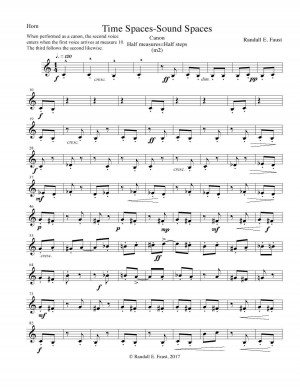
Starting at: $10.00
A study of the spaces between notes: intervals of time and of sound. In addition to their study and mastery by individuals, these exercises can be studied and performed as canons in two or three parts by like or differing instruments. Available editions include: Horn, Trumpet in B-flat, Trombone, Euphonium, and Tuba. Grade: 4 Learn More -
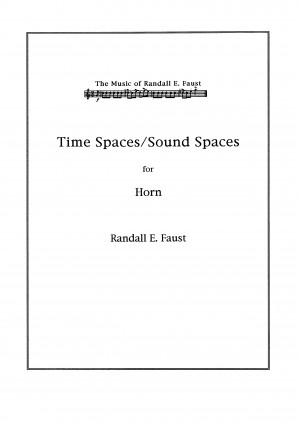
Starting at: $10.00
A study of the spaces between notes: intervals of time and of sound. In addition to their study and mastery by individuals, these exercises can be studied and performed as canons in two or three parts by like or differing instruments.
Available editions include: Horn, Trumpet in B-flat, Trombone, Euphonium, and Tuba.
Grade:4
Learn More -
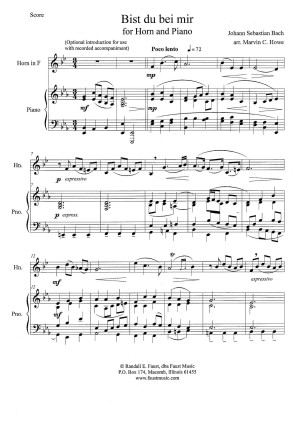
Starting at: $17.00
A collection of twelve solos for Horn and Piano arranged by Marvin C. Howe and edited by Randall E. Faust (2013). These solos are a wonderful addition to the solo repertoire for students of all levels and serve as interesting and beautiful selections for recitals, contest pieces, and as study materials to compliment The Advancing Hornist series of method books. Collection comes with a CD of the piano accompaniments. Grade: 4-6
Program and Performance notes: Click HERE
Recorded by Thomas and Tricia Jöstlein, horns and Yeon-Kyung Kim, piano on the CD: SINGING SMOOTH MELODIES ON THE HORN
Contents include:
• Bach: Bist du bei mir
• Brahms: Sonntag, Op. 47, No. 3
• Brahms: Sapphische Ode, Op. 94, No. 4
• Brahms: Feldeinsamkeit, Op. 86, No. 2
• Mozart: Dalla Sua Pace from Don Giovanni
• Faure: Pie Jesu from the Requiem
• Schubert: Einsamkeit from Die Winterreise, Op. 89
• Dvorak: Lament, Op 85. No. 6
• Faure: Sicilienne
• Mahler: Die zwei blauen Augen from Lieder eines Fahrenden
• Saint-Saens: The Tourney of King John
• Vivaldi: Qui Sedes Ad Dexteram Patres from Gloria
for practice purposes, audio samples are the piano accompaniments only:Bach: Bist du bei mir
Brahms: Sonntag, Op. 47, No. 3
Brahms: Sapphische Ode, Op.94, No. 4
Brahms: Feldeinsamkeit, Op. 86, No. 2
Mozart: Dalla Sua Pace from Don Giovanni
Faure: Pie Jesu from the Requiem
Schubert: Einsamkeit from Die Winterreise, Op. 89
Dvorak: Lament, Op 85. No. 6
Faure: Sicilienne
Mahler: Die zwei blauen Augen from Lieder eines Fahrenden
Saint-Saens: The Tourney of King John
Vivaldi: Qui Sedes Ad Dexteram Patres from Gloria
Learn More -
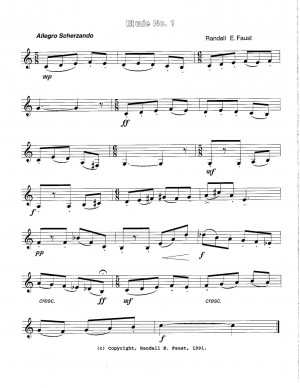
Starting at: $6.00
SCHERZI for physical and mental flexibility. Grade: 4-5 Learn More -
 $19.99The Creative Hornist is a collection of essays and information to persuade you to create your own music and discover your own musical voice. Don’t wait any longer. Start now – today! – enjoying the other half of music and musicianship that has been missing. Learn More
$19.99The Creative Hornist is a collection of essays and information to persuade you to create your own music and discover your own musical voice. Don’t wait any longer. Start now – today! – enjoying the other half of music and musicianship that has been missing. Learn More -
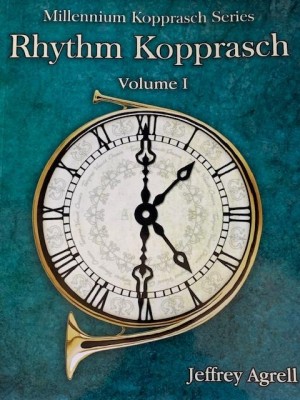 $9.99
$9.99Based on the most popular all-time etude collection for horn, 60 Etudes by Georg Kopprasch, Rhythm Kopprasch uses the original Kopprasch etude’s pitches, but applies them to a vastly more challenging array of rhythms, meters, accents, and styles.
Learn More -
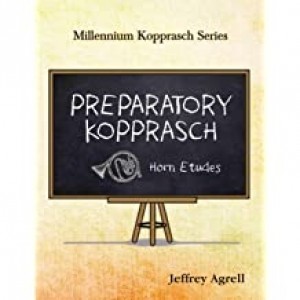 $9.99This new volume takes the spirit and general approach of the original and provides “stepping stone” etudes for young players by reducing the range and length of the originals, and occasionally making other adjustments to enable novice players to experience the material similar to the original Kopprasch etudes. Players who use this preparatory material will very likely be ready and able to tackle the original Kopprasch etudes much earlier and more easily than before. Learn More
$9.99This new volume takes the spirit and general approach of the original and provides “stepping stone” etudes for young players by reducing the range and length of the originals, and occasionally making other adjustments to enable novice players to experience the material similar to the original Kopprasch etudes. Players who use this preparatory material will very likely be ready and able to tackle the original Kopprasch etudes much earlier and more easily than before. Learn More -
 $29.00Horn Technique by Jeffrey Agrell is a comprehensive resource for teachers, and a combination road map and gold mine of information for serious students. Above all, it encourages the reader/player to combine the book’s approach with what they already do, and, fueled by curiosity and imagination, to use the book as a springboard to make new discoveries about the best ways to master this ancient and amazing instrument. A detailed, thoughtful look at ways old and new to get from one note to another, plus many illustrated suggestions about the most efficient ways to teach the instrument to students at any level. Learn More
$29.00Horn Technique by Jeffrey Agrell is a comprehensive resource for teachers, and a combination road map and gold mine of information for serious students. Above all, it encourages the reader/player to combine the book’s approach with what they already do, and, fueled by curiosity and imagination, to use the book as a springboard to make new discoveries about the best ways to master this ancient and amazing instrument. A detailed, thoughtful look at ways old and new to get from one note to another, plus many illustrated suggestions about the most efficient ways to teach the instrument to students at any level. Learn More -
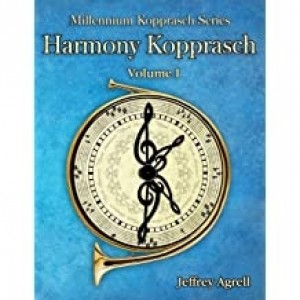 $9.99Based on the most popular all-time etude collection for horn, 60 Etudes by Georg Kopprasch, Harmony Kopprasch uses the original rhythms and meters, but applies them to a vastly more challenging array of scale and arpeggios types, chords, and keys. The player who knows the originals with their very limited scale types, chords, and keys can take their technique to the next level by revisiting the original pitches in HK in these contemporary harmonic contexts. Learn More
$9.99Based on the most popular all-time etude collection for horn, 60 Etudes by Georg Kopprasch, Harmony Kopprasch uses the original rhythms and meters, but applies them to a vastly more challenging array of scale and arpeggios types, chords, and keys. The player who knows the originals with their very limited scale types, chords, and keys can take their technique to the next level by revisiting the original pitches in HK in these contemporary harmonic contexts. Learn More -
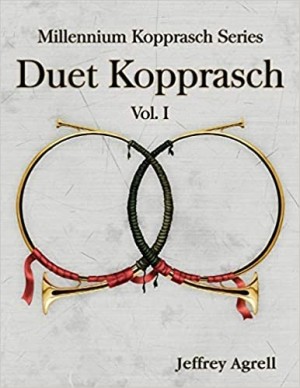 $9.99Duet Kopprasch makes the original etudes more palatable – even (dare we say it) fun by adding a social dimension to the etudes, the same way that team sports make exercise much more engaging than solitary workouts. There is also added musical interest as the original lines dance back and forth between the two parts. So grab your horn, a friend, and have fun! $9.99 Learn More
$9.99Duet Kopprasch makes the original etudes more palatable – even (dare we say it) fun by adding a social dimension to the etudes, the same way that team sports make exercise much more engaging than solitary workouts. There is also added musical interest as the original lines dance back and forth between the two parts. So grab your horn, a friend, and have fun! $9.99 Learn More -
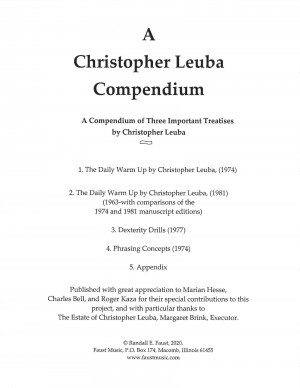 $25.00For several years, we have published the book, Rules of the Game by Christopher. In 2020, with the assistance of Mr. Leuba's students, Marion Hesse, Charles Bell, and Roger Kaza, we are publishing A Christopher Leuba Compendium. This volume includes the: 1. Daily Warm Up (1982) 2. Daily Warm Up ( 1963-with comparisons of the 1974 and 1981 manuscript editions) 3. Dexterity Drills (1977) 4. Phrasing Concepts (1974) 5. Appendix This volume is published with permission from and appreciation to the Estate of Christopher Leuba. Learn More
$25.00For several years, we have published the book, Rules of the Game by Christopher. In 2020, with the assistance of Mr. Leuba's students, Marion Hesse, Charles Bell, and Roger Kaza, we are publishing A Christopher Leuba Compendium. This volume includes the: 1. Daily Warm Up (1982) 2. Daily Warm Up ( 1963-with comparisons of the 1974 and 1981 manuscript editions) 3. Dexterity Drills (1977) 4. Phrasing Concepts (1974) 5. Appendix This volume is published with permission from and appreciation to the Estate of Christopher Leuba. Learn More -
 $25.00
$25.00Intermediate to Advanced Studies-a continuation and development of studies from Volume I. Contents include Descending Scale Studies; Legato and Articulation Studies; Smooth and rhythmically sophisticated Melodies in Major, Minor, and Modal Scales; Lip Slurs; and Marvin Howe's previously unpublished articles on the Exhale Warm-Up and the Squeak Buzz.
Grade: 4-6
Learn More -
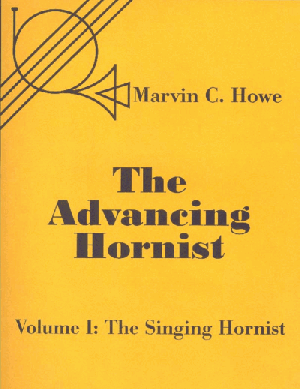 $15.00
$15.00Intermediate to Advanced Studies continuing the style of Marvin Howe's Method for French Horn. Contents include Long-tone Duets, Descending Scale Studies, Articulation Studies, Lip Slurs in a variety of Registers and Rhythms, Smooth Melodies and Duets in Major, Minor, and Modal Scales, studies in Transposition, and Marvin Howe's previously unpublished paper presented at the 1991 International Horn Symposium: The Refinement of Tone Production. Grade: 4-6
Audio for Long Tone Duets: Track 1: F Major Track 2: D minor
Learn More -
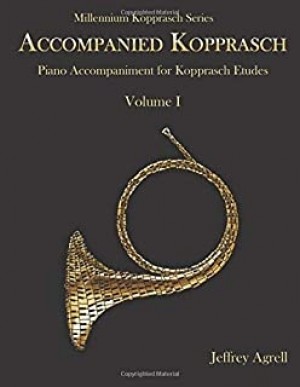 $9.99The famous Kopprasch etudes for horn (ca. 1830) are, like almost all etude collections, for horn alone. As useful as they are in developing technique, Kopprasch etudes in themselves are rather dry and mechanical as far as considering them as music is concerned. To add some life and depth to them, we have composed piano accompaniments to the first 34 etudes. These accompaniments provide some background in harmony and rhythm for the horn player, and should make the process of working on the originals much more musical and interesting; some may even be suitable for performance. The level of the accompaniments is intermediate - not for a beginner, but by no means virtuoso, so horn teachers with some level of piano skill will be able to play many of them. Learn More
$9.99The famous Kopprasch etudes for horn (ca. 1830) are, like almost all etude collections, for horn alone. As useful as they are in developing technique, Kopprasch etudes in themselves are rather dry and mechanical as far as considering them as music is concerned. To add some life and depth to them, we have composed piano accompaniments to the first 34 etudes. These accompaniments provide some background in harmony and rhythm for the horn player, and should make the process of working on the originals much more musical and interesting; some may even be suitable for performance. The level of the accompaniments is intermediate - not for a beginner, but by no means virtuoso, so horn teachers with some level of piano skill will be able to play many of them. Learn More -
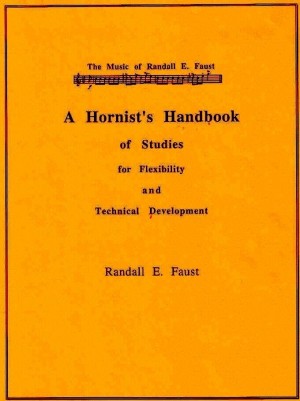 $25.00Randall Faust's comprehensive horn studio handbook of technical studies. Contents include studies in Long Tones, Scales, Intervals, Scales in Intervals, Lip Trills, Lip Slurs, Articulation, Arpeggios, Stopped Horn, Dynamic Range, and Warm-ups.
$25.00Randall Faust's comprehensive horn studio handbook of technical studies. Contents include studies in Long Tones, Scales, Intervals, Scales in Intervals, Lip Trills, Lip Slurs, Articulation, Arpeggios, Stopped Horn, Dynamic Range, and Warm-ups.Grade: 3-6
Learn More -
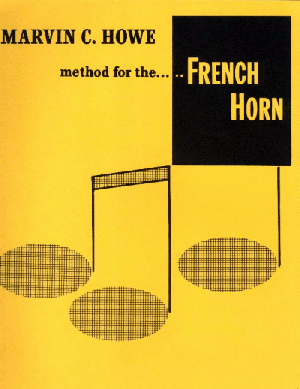 $8.50
$8.50
Since 1950, the standard beginning Method Book for Horn. Well ordered and refined presentations of the concepts of tone production, articulation, transposition, and bass-clef reading. A good introduction to major and minor keys through many smooth melodies and duets. This is a source of many popular lip slur exercises.Grade: 1-4
Learn More -
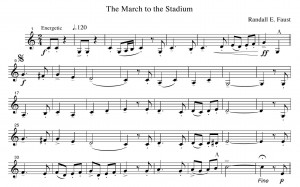
Starting at: $10.00
This collection: Solo Studies for the Healthy Hornist contains ten solos of varying styles. Specifically written for the younger student in mind, the studies in this book will be interesting and challenging to more advanced players as well. When I retired from Western Illinois University in 2018, the focus of my teaching changed. No longer was I working with graduate students-or even undergraduate students who were doing more advanced projects on Wagner Tuba or the Natural Horn; many of my students, then, were in the younger years of high school or junior high school. So, even though I was older, I was spending more time with younger students. So, as I was spending more time teaching these younger students, I became more attuned to their activities in band, dance, and various athletic pursuits. As a result, let me give special thanks to these students who provided inspiration and test runs of these solo studies: Noah, Ernesto, Jack, Elena, Emily, Anabelle, Lorelei, Brooks, and Carter. Their energy and imagination have been an inspiration for these Solo Studies. Learn More -
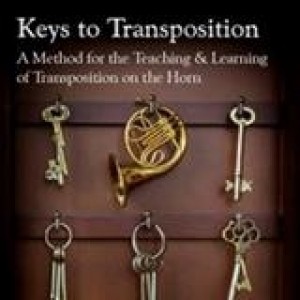 $24.95Horn players need to transpose, yet until now, there has not been a complete method devoted to teaching this essential skill. This method begins by explaining why horn parts need to be transposed and then uses this historical information to provide the hornist with a concrete strategy to master transposition. After building skills through exercises, excerpts from the horn literature are presented for practical application. Helpful transposition tips, practice techniques, and musical advice enhance the musical examples. Learn More
$24.95Horn players need to transpose, yet until now, there has not been a complete method devoted to teaching this essential skill. This method begins by explaining why horn parts need to be transposed and then uses this historical information to provide the hornist with a concrete strategy to master transposition. After building skills through exercises, excerpts from the horn literature are presented for practical application. Helpful transposition tips, practice techniques, and musical advice enhance the musical examples. Learn More -
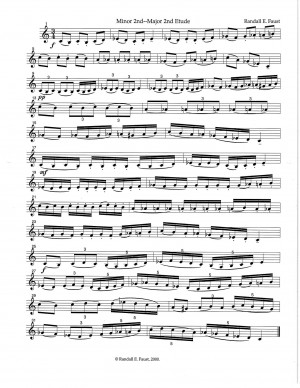
Starting at: $6.00
New and accessible studies based on each of the intervals from the Minor Second through the Major Seventh. Grade: 4 Learn More

